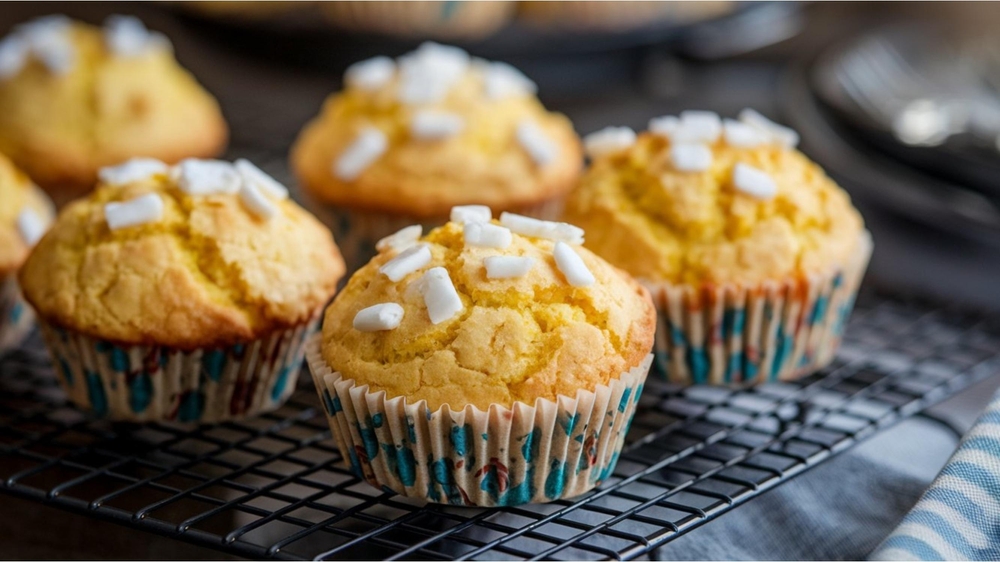Cornbread is a beloved comfort food with a variety of spins, from sweet to savory. Many struggle with achieving the perfect balance of moisture and fluffiness. The secret to making perfect cornbread every time lies in the careful combination of ingredients and precise baking techniques.
Start by blending your dry ingredients: flour, cornmeal, sugar, salt, and baking powder. This ensures an even rise and consistent texture. Then, mix wet ingredients like milk, eggs, and melted butter separately before folding them gently into the dry mix to avoid overmixing.
Another tip is using both baking powder and baking soda for added fluffiness. If you’re aiming for a moister cornbread, incorporating ingredients like yogurt or sour cream can make a significant difference. Experiment with variations until you find your ideal combination, and soon, whipping up the perfect cornbread will become second nature.

The Basics of Cornbread
Perfecting cornbread involves understanding ingredient choices and their impacts. From selecting the right cornmeal to balancing the mix of dry and wet ingredients, each step contributes significantly to the final product.
Choosing the Right Ingredients
Ingredients can make or break cornbread. Quality flour, cornmeal, and fresh leavening agents ensure good texture. Balance sweet and savory elements based on preference. Regular milk or buttermilk can be used, with buttermilk often yielding a richer taste. Sweeteners like honey or maple syrup add distinct flavors, while fats like butter or oil maintain moisture.
Some recipes call for a mix of flour and cornmeal, while others prefer all cornmeal for a more traditional texture. Eggs are essential for binding and adding richness.
Cornmeal Varieties and Impacts
Cornmeal comes in different grinds and types. Fine, medium, and coarse grinds each provide unique textures.
Fine grind: Produces a smoother, cake-like cornbread.
Medium grind: Commonly used, giving a balanced texture.
Coarse grind: Ideal for a more rustic, crumbly texture.
White and yellow cornmeals are available. Yellow cornmeal has a stronger corn flavor and is traditional in many recipes. White cornmeal is milder and often used in Southern-style cornbread. Freshness is crucial; older cornmeal can taste stale and affect texture.
Experimenting with these different types and grinds can help achieve the desired cornbread texture.
Mastering the Technique
Creating perfect cornbread every time involves mastering the mixing process and baking it to perfection. The right consistency and baking tips can make all the difference.
Mixing and Consistency
For ideal cornbread, combine cornmeal and flour in a large bowl with ingredients such as sugar, baking powder, baking soda, and salt.
Using wet ingredients like buttermilk, eggs, and melted butter ensures a moist texture.
Mixing should be done gently to avoid overworking the batter. Overmixing can lead to a dense, tough bread instead of the light, fluffy cornbread desired.
Pour milk and egg mixture into dry ingredients, then stir until just combined. Use a wooden spoon or spatula for gentle mixing.
Baking Tips for Perfection
Preheat the oven to the right temperature for consistent results, whether using a conventional or convection oven.
Preheating a cast iron skillet with bacon grease or butter brings richness and aids in creating a crisp crust.
Once the batter is poured, bake immediately for even cooking. Timing and temperature are crucial to achieve a golden-brown crust while maintaining a moist interior.
Consider adding a twist like jalapeño-infused honey to the finished cornbread for a unique flavor.
Monitoring the bread as it bakes ensures it doesn’t become overcooked or dry. Frequent checking helps achieve the perfect balance of moisture and crispiness, delighting any cornbread lover.
